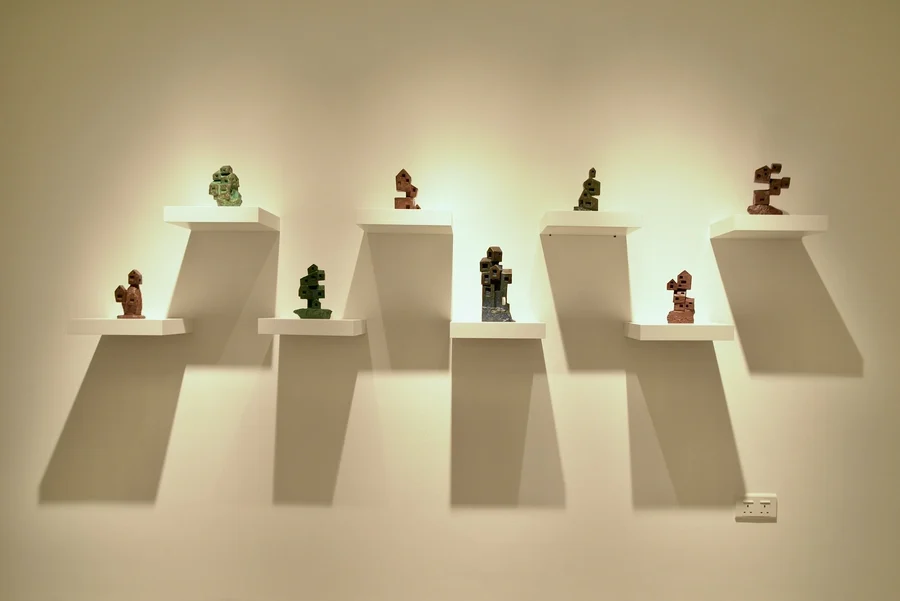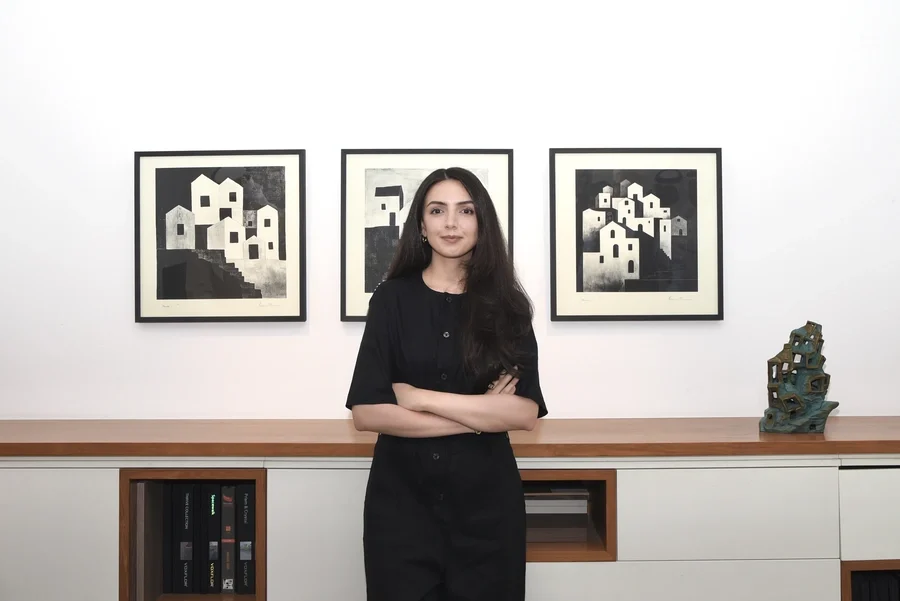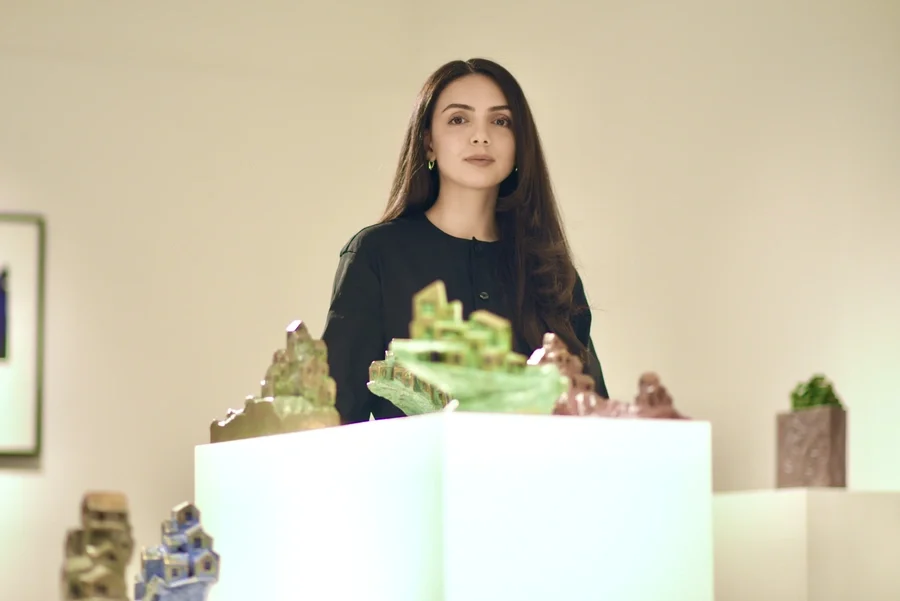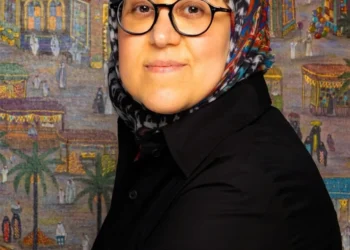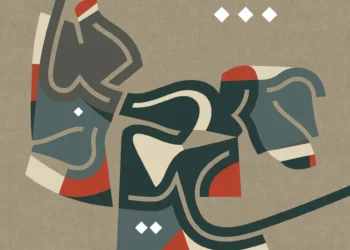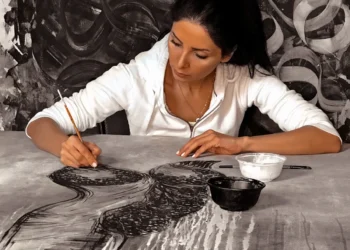COULD YOU DESCRIBE YOUR CREATIVE PROCESS?
My creative process is shaped by both memory and research. I begin with questions that are personal, emotional, and rooted in lived experience. Having grown up in many different places, I carry a layered perspective that influences how I see space and identity. My academic training in art history supports this reflection, while growing up in an artistic household has made intuition a core part of my work. I began with painting, but I was drawn to painting, bronze, ceramic, and silkscreen over time. Each material offers its way of holding presence, memory, and emotional weight.
WHO OR WHAT HAVE BEEN SOME OF THE MOST SIGNIFICANT INFLUENCES?
My upbringing is central to my work. Moving between countries shaped how I experience identity and belonging. These shifts made me question how a sense of home can be formed when geography keeps changing. Being Arab and growing up across different cultures gave me a layered understanding of space and self. That complexity continues to shape how I approach form, especially in the recurring use of the house in my work.
YOUR EXHIBITION “BUILT ELSEWHERE” CENTERS AROUND THE HOUSE FORM. WHY DOES THIS MOTIF RESONATE?
I return to the shape of a house not to recreate a place I have known but to understand what it holds. The house is not about architecture. It is a form that carries emotional meaning. It holds memory, loss, and imagination. It is a symbol and a site. A place we inherit, resist, and rebuild. For me, the house reflects how identity is shaped through movement and memory. It asks what home means when you have lived across places, when belonging becomes something you create rather than return to.
HOW DO THESE IDEAS MANIFEST IN YOUR SCULPTURES AND PRINTS?
Each sculpture in this exhibition is slightly off balance. That instability is intentional. It mirrors how it feels to exist between places. Some of the forms lean. Some stand tall. Some do not have bases at all. These physical gestures reflect emotional states – grounded yet unsettled. The prints express the same feeling, but in a more subtle and quiet form. They are impressions rather than full images, like memory fragments that are incomplete but still real.
WHAT DOES “ARRIVAL” MEAN TO YOU IN THIS CONTEXT?
Arrival, for me, is not about returning to a place. It is about becoming present in your complexity. I no longer feel the need to search for a single definition of home. I am learning to live with the layers of memory, culture, and movement without needing to resolve them. I am not where I began, but I am still building. What I am shaping is not a return. It is a presence. A place to arrive, not to long for.
WHAT IS THE KEY TAKEAWAY FOR THE AUDIENCE?
I want people to feel that belonging does not have to be tied to a single place. Through the sculptures and prints, I was building a personal world shaped by memory and imagination. A world that reflects what home can mean when it is carried rather than inherited. I hope viewers feel there is space for their version of home within this work.
WHAT ROLE DOES ART PLAY IN SOCIETY?
Art carries memory. Even when language fades, art remains. It becomes a record of how we felt, how we imagined, and how we belonged. I believe art creates space for reflection. It holds presence and invites others to witness, to feel, and to ask their own questions.





























